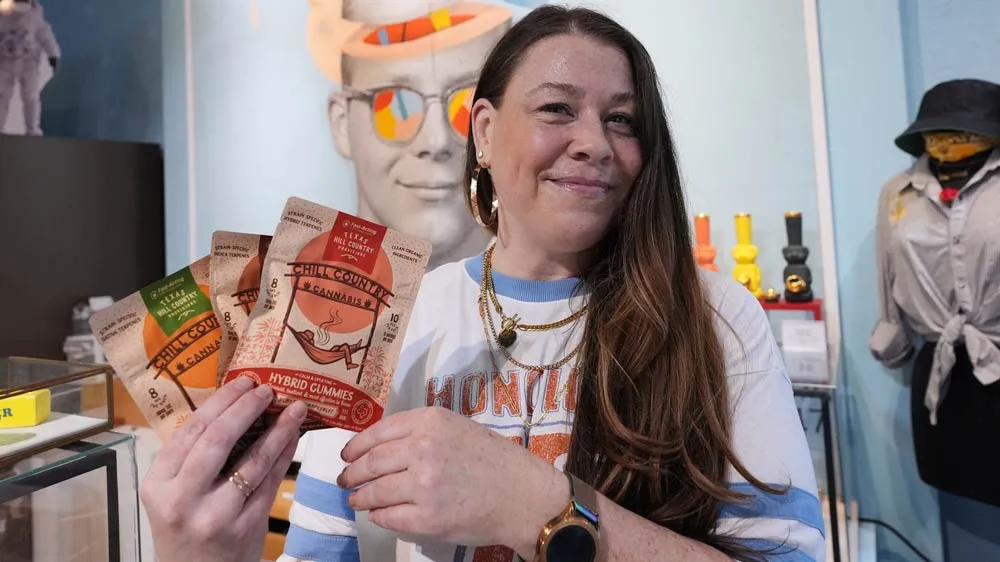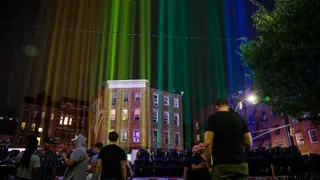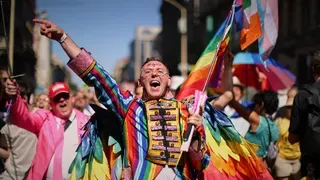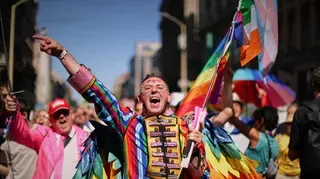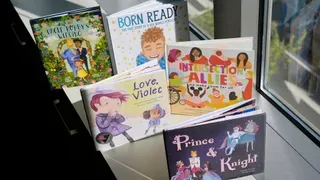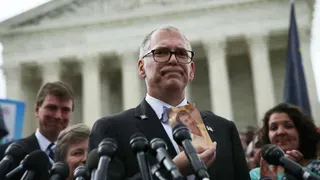May 15, 2013
Getting Gayer :: Cities with Growing GLBT Populations
Kilian Melloy READ TIME: 5 MIN.
Fort Lauderdale beat every big city at growing its gay and lesbian population between 2000 and 2010. During that time span, the portion of households containing same-sex partners increased more in the South Florida city than in all other cities of similar or greater size.
Using Census data, SFGN figured out each city's unmarried gay-couple-to-straight-couple ratio in 2000, subtracted it from their 2010 ratio, and ranked places by going from biggest increases to smallest. We included only towns with a 2010 population of at least 100,000 in order to control for city size.
The result?
The largest growth in same-sex-couple households per capita was in cities near traditional LGBT hotspots. The top two spots went to Fort Lauderdale and Portland, Ore., while Victorville, California, took 10th place.
Why did these towns attract so many gays and lesbians, while places like Miami, San Francisco, Seattle, and Los Angeles failed to crack the top 10?
Two themes came up again and again: Proximity to another big LGBT-friendly city, and a cheaper housing market than in the big LGBT-friendly city.
FORT LAUDERDALE, FLORIDA
Keith Blackburn, CEO of the Greater Fort Lauderdale Gay & Lesbian Chamber of Commerce and owner of Rainbow Realty, told SFGN his clients have opined that housing in Fort Lauderdale is more affordable than in Miami or Miami Beach.
"There's more housing opportunity here," he said.
Plus, the climate just gets people.
"The weather is much warmer than in the Northeast," he said. "A lot of people in the Northeast will buy a second home here, and that's how it starts." And that's how Blackburn said it started for him when he moved from Washington, D.C. to Florida in 2003.
Besides the weather, the LGBT presence in Fort Lauderdale is larger than it is in the big cities south of it.
One in 31 households contain unmarried same-sex couples in the Fort Lauderdale area, compared with one in 99 for Miami and one in 52 for Miami Beach, according to 2010 Census data. And GayCities.com lists 15 gay bars in Fort Lauderdale, 10 in Miami, and just 8 in Miami Beach.
Along with that, Blackburn likes how easy-going it is here compared to where he came from.
"D.C. is more business," he said. "South Florida is much more laid back."
PORTLAND, OREGON
A similar story of smaller city beating bigger cities exists in the Pacific Northwest, where Portland had the nation's second-biggest per capita growth in unmarried gay and lesbian couple households, beating out nearby San Francisco and Seattle.
One big reason for Portland's growth is similar to Fort Lauderdale's.
"It's an affordable place to live, especially when the San Francisco area is so expensive," said Jill Nelson, executive director for the Portland Area Business Association, the city's LGBTQA Chamber of Commerce.
How much cheaper is Portland? According to 2011 Census data, mortgage-paying homeowners' median monthly costs were $1,682 in Portland, $2,244 in Seattle, and $3,043 in San Francisco.
But it's more than economical living that has drawn gays and lesbians to the city, Nelson said.
"Portland is very accepting. It's a very easy city to be out in. There are rainbow flags on many bars around here," she said. Nearly one in 50 households had same-sex couples in 2010, according to Census data. For comparison, the average for all big cities was 1 in 115.
As for what she loves about Portland, Nelson said in an email:
"I love the variety - if you want to ski or snow shoe, the mountains are less then [sic] 2 hours away, as is the ocean, wineries, volcanoes, rain forests, as well as some of the best food, coffee and micro brew beers in the world."
ST. LOUIS, MISSOURI
One anomaly in our rankings is St. Louis, where the total population decreased while the LGBT population had increased.
Between 2000 and 2010, the Gateway to the West shrunk from 147,076 occupied households to 142,057, while the number of households with unmarried same-sex couples increased from 1,297 to 1,927.
Why did this happen?
One theory comes from Staci Stift, president of Pride St. Louis, Inc., a local LGBT non-profit founded in 1979. Stift believes that political protections and backing from four-term mayor Francis Slay helped make St. Louis attractive to the LGBT community.
"He comes to the bars, he comes to the functions," she said. "He isn't just someone who talks."
And she has a point.
Last year, Slay pushed to get the city's Firemen Retirement System to give benefits to widowed partners of gay firefighters. Prior to that, he helped get sexual orientation and gender identity added to the city's nondiscrimination policy.
And, of course, there's inexpensive housing.
"Housing is very affordable," says Stift, who said she and her wife bought a two-bedroom, 1800-square-foot bungalow for $90,000.
Most of all, though, Stift likes what she calls the small-town feel of the city.
"Everybody knows everyone else, but it still has a metropolitan feel."
VICTORVILLE, CALIF.
Unless you live in Victorville, you've probably never heard of Victorville. If you check a map though, you'll get some idea of what makes the desert city of 115,903 so attractive to LGBT people.
According to Fernando Torres, Community Page editor for the Victorville Daily Press, the proximity of the city to big, gay-friendly cities helps draw LGBTs to the town. He said it takes him an hour and a half to drive to L.A. or Palm Springs, and two to three hours for Las Vegas.
Plus, Torres likes how much cleaner and clearer Victorville is than those bigger cities.
"I had friends who come to visit, and they fall in love with the high desert air. You can see the meteors at night. The air is very clear," he told SFGN. "It's not as polluted as it is in L.A. It's not very congested."
And, as with our other ranked cities, Victorville's housing market is relatively cheap compared to its bigger LGBT-friendly cities. According to 2011 Census data, median monthly housing costs for homeowners with a mortgage were $1,529 in Victorville, $1,680 in Las Vegas, $1,951 in Palm Springs, and $2,611 in L.A.
Victorville's LGBT scene isn't that big, though. GayCities.com lists just one gay bar in the city (Ricky's, which Torres describes as a "neighborhood bar"), and Torres said he's seen no major pride marches since 1983, when he moved to the city. Not that the city is anti-gay - just indifferent.
"It's not that common," Torres said. "People just don't care about it here the way they do in other cities."
The top 10 cities for GLBT population growth are as follows:
1. Fort Lauderdale, FL 11.2% increase (per 1,000 households)
2. Portland, OR 6.7% increase (per 1,000 households)
3. Long Beach, CA 6.1% increase (per 1,000 households)
4. St. Petersburg, FL 5.8% increase (per 1,000 households)
5. Oakland, CA 4.8% increase (per 1,000 households)
6. St. Louis, MO 4.8% increase (per 1,000 households)
7. Washington, D.C. 4.5% increase (per 1,000 households)
8. Pasadena, CA 4.3% increase (per 1,000 households)
9. Manchester, NH 4.1% increase (per 1,000 households)
10 Victorville, CA 3.9% increase (per 1,000 households)
Kilian Melloy serves as EDGE Media Network's Associate Arts Editor and Staff Contributor. His professional memberships include the National Lesbian & Gay Journalists Association, the Boston Online Film Critics Association, The Gay and Lesbian Entertainment Critics Association, and the Boston Theater Critics Association's Elliot Norton Awards Committee.
